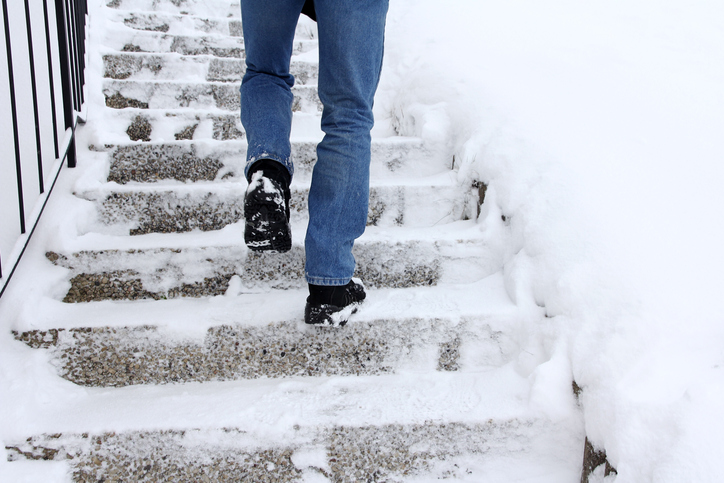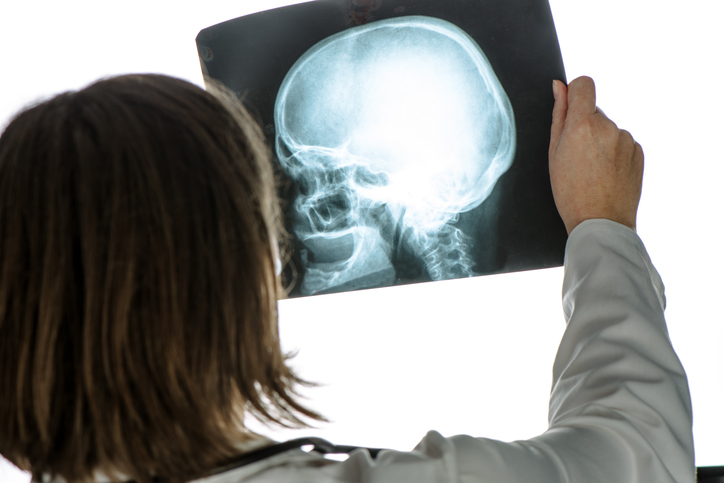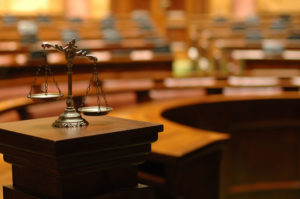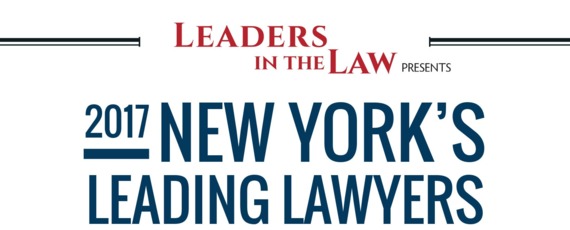
Winters in New York can be unpredictable. The temperatures might turn mild for a little while, before Mother Nature throws a massive snowstorm at the state. Naturally, wintry weather brings unique hazards. In addition to the poor driving conditions, winter can cause difficulties for pedestrians. Take precautions to avoid slipping and falling on the snow and ice. And if you do fall, be advised of the next steps to take to determine if you could recover compensation for your injuries.
Preventing winter weather-related slip and falls
While it’s impossible to guarantee your safety, there are a number of things you can do to reduce your risk of slipping and falling on the snow or ice this winter. First, upgrade your footwear. You’ll need sturdy snowboots with non-skid soles. Another option is to get a pair of traction cleats, also called ice grips. These are simple, unobtrusive contraptions that you can pull over any pair of shoes to help grip the ground better. You can take them off when you reach your destination.
Keep an eye on the ground in front of you as you walk, and use handrails whenever available. Take small steps and move slowly. Wear gloves to keep your hands warm. Avoid sticking your hands in your pockets, since this affects your center of gravity. If you do feel yourself falling, you might be able to react quickly enough to either pull yourself out of the fall or to control the fall. You can control it by bending your knees and dropping straight downward.
What to do when a fall occurs
Your health and safety are your top priorities. After slipping and falling, your injuries might be severe enough to warrant a call to 911. Even if you think you’re only mildly injured, you should seek medical help. Your injuries might be more severe than they initially appear. Plus, your medical records will substantiate a legal claim.
You should also document the scene of the accident. If you have a smartphone with you, take close-up photos of the area and pictures that put the immediate area into context so that its exact location can be determined. If anyone witnessed the accident, you should politely ask for their names and contact information. They may be asked to provide a witness statement later.
Next, report the accident to the property owner or manager as soon as possible. You should have the details of the incident in writing. Ask the manager to provide you with a written report, or to read and sign your own written report.
Where to go for legal help in NYC, New York
For over 50 years, the personal injury lawyers of Friedman, Levy, Goldfarb & Green have been providing vigorous legal representation to the residents of Manhattan, Brooklyn, the Bronx, Queens, Staten Island and Long Island. Call our trilingual staff today at 800-969-5389 any time of the day or night to discuss your situation and request a consultation. We may be able to secure compensation for your injuries without filing a lawsuit. Request your free case review with an experienced NYC slip and fall lawyer today.
Additional resources on winter weather safety:
- Michigan.gov, Winter Fall Prevention & Safety Tips, https://www.michigan.gov/documents/mdch/Winter_Fall_Prevention_494521_7.pdf
- Iowa State University, Walk Safe this Winter, https://www.ehs.iastate.edu/news/walk-safe-winter




 Police officers in New York City occasionally need to use reasonable force to protect themselves and the public. Where problems arise is when that force is not reasonable, but is instead excessive. Excessive force amounts to police brutality, and is not just a civil liability issue but also a
Police officers in New York City occasionally need to use reasonable force to protect themselves and the public. Where problems arise is when that force is not reasonable, but is instead excessive. Excessive force amounts to police brutality, and is not just a civil liability issue but also a  According to statistics from the National Safety Council, half of all adolescents will be involved in a car accident before they finish high school. Getting a driver’s license is a rite a passage for teenagers, but just because they are legally able to get behind the wheel doesn’t mean they are safe drivers. Good driving skills take time, practice and patience to build, but beyond setting a good example, what can you do to keep your kids safe on the road?
According to statistics from the National Safety Council, half of all adolescents will be involved in a car accident before they finish high school. Getting a driver’s license is a rite a passage for teenagers, but just because they are legally able to get behind the wheel doesn’t mean they are safe drivers. Good driving skills take time, practice and patience to build, but beyond setting a good example, what can you do to keep your kids safe on the road? The rules for premises liability accidents in New York State are well established. If you suffer an injury when you are lawfully on another person’s property, the property owner is liable if his or her negligence caused the injury. Negligence and liability can be established, for example, by showing that the owner was aware of a defect or dangerous condition on the property and did nothing about it. The more critical element of a slip and fall lawsuit is determining the
The rules for premises liability accidents in New York State are well established. If you suffer an injury when you are lawfully on another person’s property, the property owner is liable if his or her negligence caused the injury. Negligence and liability can be established, for example, by showing that the owner was aware of a defect or dangerous condition on the property and did nothing about it. The more critical element of a slip and fall lawsuit is determining the  In New York State, property owners have an obligation to exercise a reasonable amount of care to maintain safe conditions on their property and to prevent injuries to persons who are expected to visit that property. This obligation is the starting point for determining a
In New York State, property owners have an obligation to exercise a reasonable amount of care to maintain safe conditions on their property and to prevent injuries to persons who are expected to visit that property. This obligation is the starting point for determining a  Civil liberties are a right bestowed upon all Americans. These freedoms ensure equal opportunities and equal treatment regardless of race, gender, ethnicity, sexual orientation, political views, religion or disability. Repression, discrimination or mistreatment on the basis of any of these factors is not only unjust, but a federal violation. As a citizen of the United States, you are afforded protections for the freedom of speech, the right to due process, religion and assembly, and the right to petition against state and local governments.
Civil liberties are a right bestowed upon all Americans. These freedoms ensure equal opportunities and equal treatment regardless of race, gender, ethnicity, sexual orientation, political views, religion or disability. Repression, discrimination or mistreatment on the basis of any of these factors is not only unjust, but a federal violation. As a citizen of the United States, you are afforded protections for the freedom of speech, the right to due process, religion and assembly, and the right to petition against state and local governments. New York construction accident statistics show a steep increase in serious injuries and fatalities, while safety inspections decline. The New York Committee for Occupational Safety & Health called the 71 New York State construction worker deaths in 2016 “an epidemic of construction fatalities.” The numbers reflect a workplace culture that is not as dedicated to safety as it should be. The vast majority of these incidents are preventable.
New York construction accident statistics show a steep increase in serious injuries and fatalities, while safety inspections decline. The New York Committee for Occupational Safety & Health called the 71 New York State construction worker deaths in 2016 “an epidemic of construction fatalities.” The numbers reflect a workplace culture that is not as dedicated to safety as it should be. The vast majority of these incidents are preventable.




